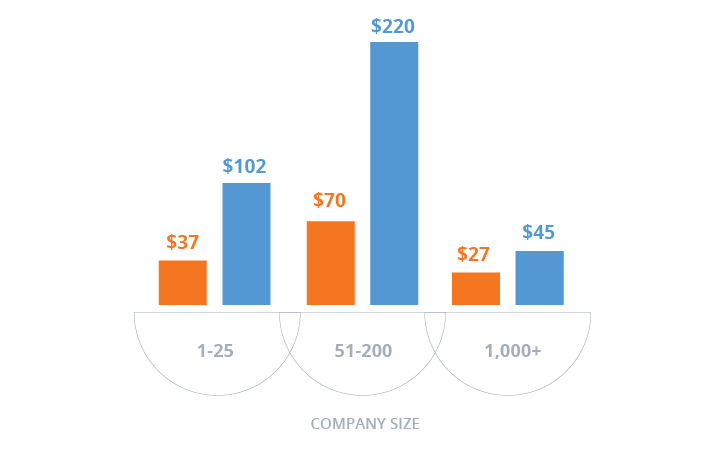The average American has an online attention span of eight seconds. Now think about the millions of pieces of data being uploaded to the Internet every minute. Yes, every minute. The distance between those stats has been closing over the past few years, and it’s not going to slow down.
That means there’s a good chance your content may not be surfacing where, when and to whom you want. That’s where Inbound Marketing becomes a vital part of your strategic plan.
How?
By establishing your company as an industry leader and innovator. By being the choice provider of products, services and information. By producing creative and engaging content that your target audience seeks out.
Why Inbound Marketing?
Unfortunately, many companies are cautiously peering over the fence instead of implementing a thorough Inbound Marketing strategy.
COMMON REASONS WHY:
1) They don’t know how to do Inbound Marketing.
2) They don’t have the personnel.
3) They think they don’t need Inbound Marketing.
HERE’S A FEW REASONS WHY THOSE TYPICAL HESITATIONS SHOULDN’T HOLD YOUR COMPANY BACK FROM SUCCESS:
1) You can learn. There are resources everywhere (you’re reading one right now). Inbound marketing doesn’t have to be foreign. Half of the battle is in clear communication; shifting from sales-first focus to a value-first approach is key. If you can transition from pitching to genuinely helping customers make smart decisions, you’re half way there!
2) Your company can hire the personnel or an Inbound Marketing agency to help you transition to Inbound. As you go through the learning process, you’ll see that Inbound Marketing has to be a central part of a company in order to thrive. It’s important there is buy-in from the leaders at your company, and this means that full-time staff or consulting costs should have a line item on your budget. The long-term return on investment for Inbound Marketing will be enough to justify the short-term costs of getting started.
3) Not investing in an Inbound infrastructure is the same as hiding the entrance to your store. In other words, avoiding an Inbound strategy is basically refusing to market in a way that promotes your company the way your audience wants to hear about it. It’s the same as removing the sign from your store and hoping the right people wander in without knowing what you’re selling. Inbound Marketing turns the lights on for your audience. It sends a beacon out into the crazy online universe, and lets people know that your company is there, offering exactly what they’re looking for when they want it.
BOTTOM LINE:
Your company will be lost in the jumble of noise fighting for the scarce commodity of attention in the next five years if you avoid Inbound Marketing. Your audience is being pelted from all directions with emails, flyers, ads, tweets, posts, commercials and more. Start creating quality content that answers their questions before they ask them, and you’ll find your audience coming back for more and telling their friends to do the same. Don’t get lost in the crowd and don’t procrastinate. Adopt an Inbound Marketing strategy today.
Buyer behavior has changed dramatically. Information is power, and power is now in the hands of the consumer, not the salesmen. For companies to continue to see sales growth over the next decade, they’ll have to embrace this new dynamic.
How To Sell Inbound Marketing To Your Team
Inbound Marketing is a substantial investment for your business. It takes time, effort, and money to make the necessary adjustments to company philosophy and marketing methods. But if you don’t make that investment, what kind of impact will it have on your company’s future?
Talk About The Cost of Indecision
Major corporations are slowly beginning to jump on the Inbound Marketing Bandwagon. If small businesses want to compete 5 to 10 years down the road, they need to make the right decisions now.
How far do you think you will fall behind from your competitors within the next 5 or 10 years?
Based off survey results, B2B, B2C, and Nonprofit organizations are seeing dramatic results from Inbound Marketing in comparison to Outbound Marketing campaigns. They are seeing higher ROI results, and based off these results, their need to continue competing with campaigns is coming to an end.
Making the investment to revolutionize your customer acquisition process can be difficult for some companies, but the cost of indecision can be many times worse as more competitors move into the uncontested battlefields of commerce.
Talk About the Cost of Inbound vs. Outbound
According to a recent HubSpot survey, the number of marketers who claim to use inbound marketing rose from 60% last year to 85% this year. The percentage of marketers who concede they still haven’t tried inbound nearly halved to only 13%.
The difference between inbound and outbound is simply this: Inbound marketing tactics are used to entice potential customers or leads to voluntarily enter your sales funnel. Outbound marketing is essentially paying for ads. Where inbound entices customers to give their attention, outbound marketing pays for opportunities to interrupt them and capture their attention.
Although we do not completely shun all Outbound methods, the power and ROI of inbound marketing is far greater, and less expensive, than outbound.
How does inbound marketing get leads cheaper?
As mentioned before, outbound marketing is essentially paying for interruption opportunities. We still do it in the forms of radio ads, tv ads, billboards, junk mail, and even ads through Google. None of those options rely on meeting a customers needs. Instead, they are shouting at the customer, like a barker in the marketplace, hoping they’ll get a good enough percentage of people to respond so they get a positive return on the ad spend.
The moment you stop paying for these ads, their effectiveness stops. To keep getting the benefits, you have to keep paying for it.
Inbound, on the other hand, focuses on investing in marketing assets - creating valuable content that keeps providing value to potential customers long after the investment in it is done. For instance, you can invest a few weeks in creating a valuable eBook that answers the major pain points of your potential customers. Two years later, that eBook will still be generating leads for your company.
Average Cost Per Lead By Company Size
- Orange = Inbound
- Blue = Traditional

Convincing Your Boss on Inbound Marketing
Inbound is not something you can do quickly and see immediate results. That's the only leftover advantage of outbound. With paid ads, you get immediate results, although they cease when you stop paying for them.
With inbound, you're building a machine that takes a while to come to life - you have to build up a lot of speed before you can get the big jet off the ground. It's that investment in the long-term success where companies find the sweet-spot of massive growth, lower cost per acquisition, and higher margins.
Inevitably, there's going to be companies who don't adopt inbound marketing, or give up half-way down the runway. They'll survive for a while but by the time they realize they absolutely need to be doing Inbound, their competitors will already be light-years ahead.
The time for action is now.





